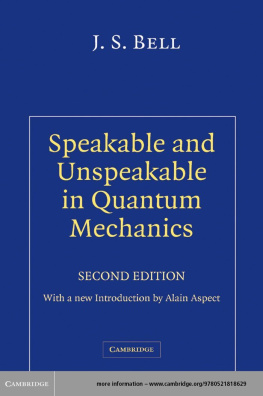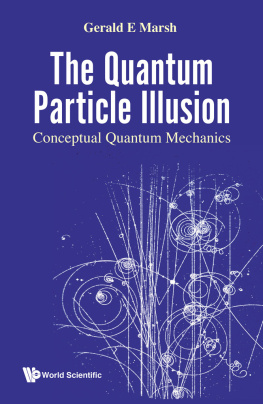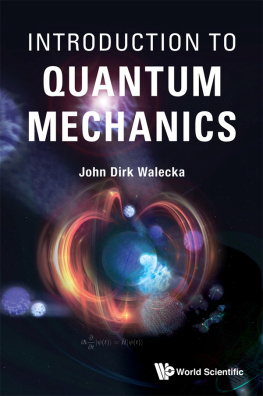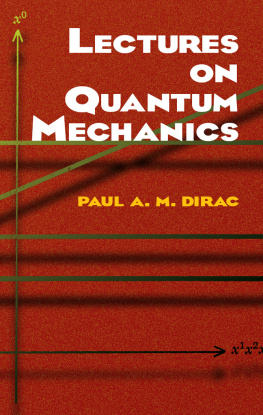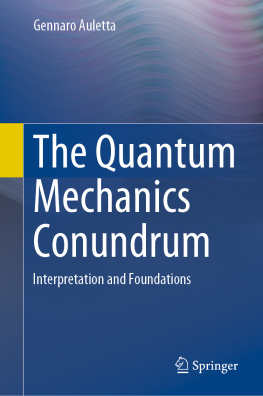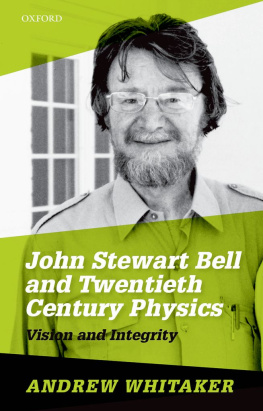Speakable and Unspeakable in Quantum Mechanics
John Bell FRS was one of the leading expositors and interpreters of modern quantum theory. He is particularly famous for his discovery of the crucial difference between the predictions of conventional quantum mechanics and the implications of local causality, a concept insisted on by Einstein. John Bells work has played a major role in the development of our current understanding of the profound nature of quantum concepts and of the fundamental limitations they impose on the applicability of the classical ideas of space, time, and locality.
This book includes all of John Bells published and unpublished papers on the conceptual and philosophical problems of quantum mechanics, including two papers that appeared after the first edition was published. All the papers have been reset, the references put in order and minor corrections made. The book includes a short preface written by the author for the first edition, and also an introduction by Alain Aspect that puts into context John Bells enormous contribution to the quantum philosophy debate.
This collection will be of interest to graduate students and research workers in physics with an interest in the conceptual foundations of quantum theory. It will also be of value to philosophers of science working in this area.
Collected papers on quantum philosophy

Speakable and Unspeakable
in Quantum Mechanics
J. S. BELL
CERN
With an Introduction by Alain Aspect

CAMBRIDGE UNIVERSITY PRESS
Cambridge, New York, Melbourne, Madrid, Cape Town, Singapore, Sao Paulo,
Delhi, Dubai, Tokyo
Cambridge University Press
The Edinburgh Building, Cambridge CB2 8RU, UK
Published in the United States of America by Cambridge University Press, New York
www.cambridge.org
Information on this title: www.cambridge.org/9780521523387
Mary Bell 1987, 1993, 2004
This publication is in copyright. Subject to statutory exception
and to the provisions of relevant collective licensing agreements,
no reproduction of any part may take place without
the written permission of Cambridge University Press.
First published 1987
First paperback edition 1988
Seventh printing1997
Revised edition First Published 2004
Third printing 2010
Printed in the United Kingdom at the University Press, Cambridge
A catalogue record for this publication is available from the British Library
ISBN 978-0-521-818 2-9 hardback
ISBN 978-0-521-52338-7 paperback
Cambridge University Press has no responsibility for the persistence or accuracy
of URLs for external or third-party internet websites referred to in this publication,
and does not guarantee that any content on such websites is, or will remain,
accurate or appropriate.
To my Mother and Father
Contents

J.S. Bell: Papers on quantum philosophy

On the hypothesis that the Schrdinger equation is exact. TH-1424-CERN October 27, 1971. Contribution to the International Colloquium on Issues in Contemporary Physics and Philosophy of Science, and their Relevance for our Society, Penn State University, September 1971. Reproduced in Epistemological Letters, July 1978, pp 128, and here in revised form as 15. Omitted.
Quantum field theory without observers. Talk at NaplesAmalfi meeting, May 11, 1984. (Preliminary version of Beables for quantum field theory.) Omitted.
Preface to the first edition

Simon Capelin, of Cambridge University Press, suggested that I send him my papers on quantum philosophy and let him make them into a book. I have done so. The papers, from the years 19641986, are presented here in the order, as far as I now can tell, in which they were written. But of course that is not the order, if any, in which they should be read.
, Bertlmanns socks and the nature of reality, which is concerned with the problem of apparent action at a distance.
For those who know something of quantum formalism, , On the impossible pilot wave, begins the discussion of hidden variables, and of related impossibility proofs.
More elaborate discussions of the measurement problem are given in , Quantum mechanics for cosmologists. These show my conviction that, despite numerous solutions of the problem for all practical purposes, a problem of principle remains. It is that of locating precisely the boundary between what must be described by wavy quantum states on the one hand, and in Bohrs classical terms on the other. The elimination of this shifty boundary has for me always been the main attraction of the pilot-wave picture.
Of course, despite the unspeakable impossibility proofs, the pilot-wave picture of de Broglie and Bohm exists. Moreover, in my opinion, all students should be introduced to it, for it encourages flexibility and precision of thought. In particular, it illustrates very explicitly Bohrs insight that the result of a measurement does not in general reveal some preexisting property of the system, but is a product of both system and apparatus. It seems to me that full appreciation of this would have aborted most of the impossibility proofs, and most of quantum logic.. Many students never realize, it seems to me, that this primitive attitude, admitting a special system of reference which is experimentally inaccessible, is consistent if unsophisticated.
Any study of the pilot-wave theory, when more than one particle is considered, leads quickly to the question of action at a distance, or nonlocality, and the EinsteinPodolskyRosen correlations. This is considered briefly in several of the papers already mentioned, and is the main concern of most of the others. On this question I suggest that even quantum experts might begin with .
My attitude to the Everettde Witt many world interpretation, a rather negative one, is set out in .
There is much overlap between the papers. But the fond author can see something distinctive in each. I could bring myself to omit only a couple which were used again later with slight modifications. The later versions are included as .
For reproduction here, some trivial slips have been corrected, and references to preprints have been replaced by references to publications where possible.
In the individual papers I have thanked many colleagues for their help. But I here renew very especially my warm thanks to Mary Bell. When I look through these papers again I see her everywhere.
J. S. Bell, Geneva, March, 1987.
Acknowledgements

1 On the problem of hidden variables in quantum theory. Rev. Mod. Phys. 38 (1966) 44752. Reprinted by permission of The American Physical Society.
Next page
